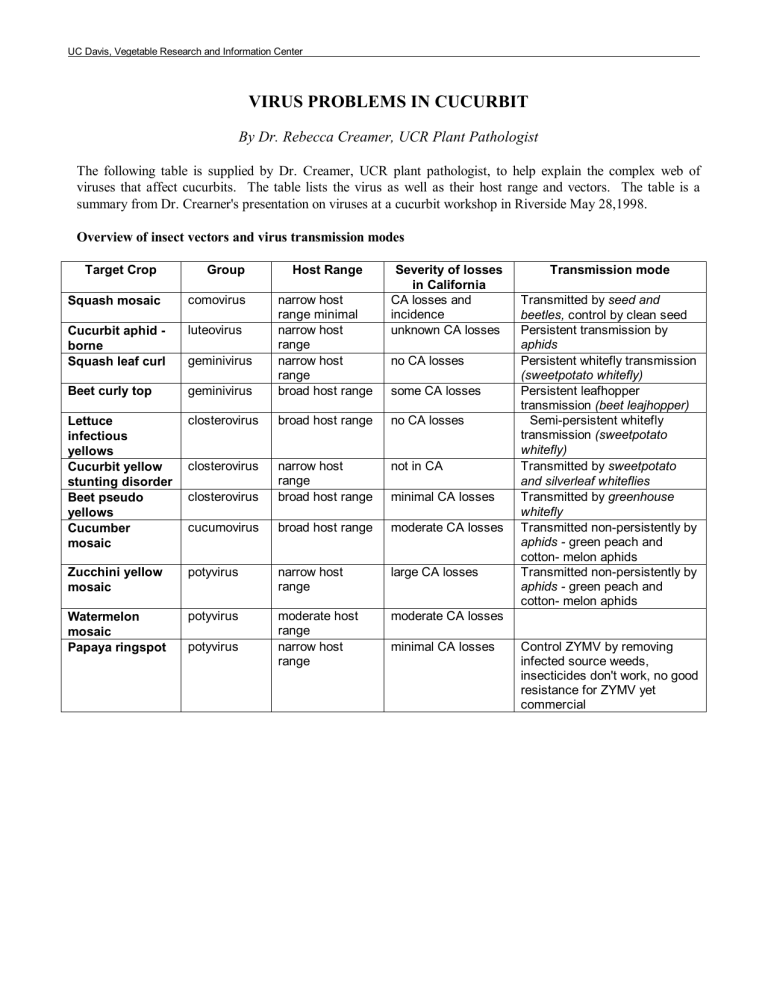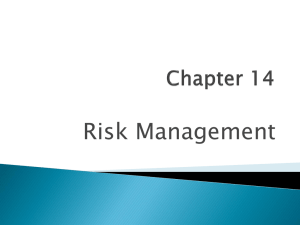VIRUS PROBLEMS IN CUCURBIT By Dr. Rebecca Creamer, UCR Plant Pathologist
advertisement

UC Davis, Vegetable Research and Information Center VIRUS PROBLEMS IN CUCURBIT By Dr. Rebecca Creamer, UCR Plant Pathologist The following table is supplied by Dr. Creamer, UCR plant pathologist, to help explain the complex web of viruses that affect cucurbits. The table lists the virus as well as their host range and vectors. The table is a summary from Dr. Crearner's presentation on viruses at a cucurbit workshop in Riverside May 28,1998. Overview of insect vectors and virus transmission modes Target Crop Group Squash mosaic comovirus Cucurbit aphid borne Squash leaf curl luteovirus Beet curly top geminivirus narrow host range minimal narrow host range narrow host range broad host range Lettuce infectious yellows Cucurbit yellow stunting disorder Beet pseudo yellows Cucumber mosaic closterovirus broad host range no CA losses closterovirus not in CA closterovirus narrow host range broad host range cucumovirus broad host range moderate CA losses Zucchini yellow mosaic potyvirus narrow host range large CA losses Watermelon mosaic Papaya ringspot potyvirus moderate host range narrow host range moderate CA losses geminivirus potyvirus Host Range Severity of losses in California CA losses and incidence unknown CA losses no CA losses some CA losses minimal CA losses minimal CA losses Transmission mode Transmitted by seed and beetles, control by clean seed Persistent transmission by aphids Persistent whitefly transmission (sweetpotato whitefly) Persistent leafhopper transmission (beet leajhopper) Semi-persistent whitefly transmission (sweetpotato whitefly) Transmitted by sweetpotato and silverleaf whiteflies Transmitted by greenhouse whitefly Transmitted non-persistently by aphids - green peach and cotton- melon aphids Transmitted non-persistently by aphids - green peach and cotton- melon aphids Control ZYMV by removing infected source weeds, insecticides don't work, no good resistance for ZYMV yet commercial









